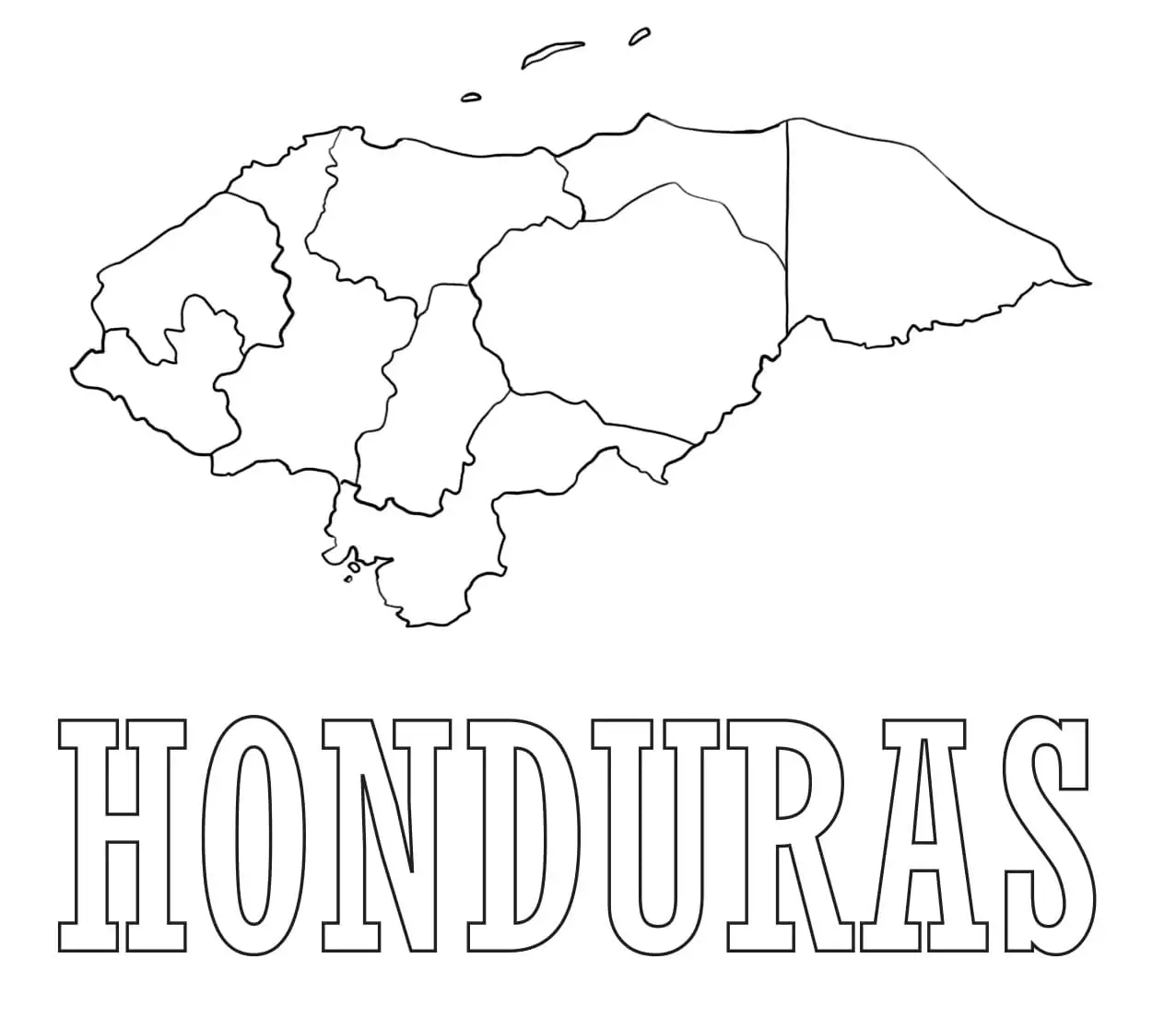When you think of Honduras, your mind might wander to its lush rainforests, ancient Mayan ruins, or pristine beaches. But there's another cultural gem that deserves your attention—cerámicas in Honduras. This vibrant art form isn't just about pottery; it's a reflection of the country's rich history, traditions, and creativity.
So, why should you care about ceramics in Honduras? Well, my friend, these handmade masterpieces are more than just decorative pieces. They're a testament to the skills passed down through generations, a story of survival, innovation, and cultural pride. Think about it—every piece of pottery tells a tale of its own, from the hands that shaped it to the communities that thrive because of it.
As we dive deeper into this world of clay and creativity, you'll discover the beauty, diversity, and significance of ceramics in Honduras. Whether you're an art enthusiast, a traveler, or someone who appreciates authentic craftsmanship, this article will open your eyes to a fascinating world you might have overlooked. So, buckle up, and let's explore the colorful universe of Honduran ceramics!
Read also:Trek Coffee Co Your Ultimate Coffee Haven
Table of Contents
- The Rich History of Cerámicas in Honduras
- Ceramic Regions in Honduras
- The Making Process: From Clay to Art
- Different Styles and Techniques
- Cerámicas and the Local Economy
- Cerámicas in Tourism
- Challenges Faced by Cerámica Artisans
- Sustainability in Cerámica Production
- Where to Find Authentic Cerámicas in Honduras
- The Future of Cerámicas in Honduras
The Rich History of Cerámicas in Honduras
Let's rewind the clock and take a trip back to the roots of ceramics in Honduras. Long before the Spanish arrived, the indigenous peoples of this land were already crafting stunning pottery. The Mayans, Lenca, and other native groups were masters at turning clay into functional and artistic objects. Their designs often depicted animals, gods, and scenes from daily life, offering a glimpse into their worldview.
Fast forward to the colonial era, and you'll find that the Spanish introduced new techniques and styles. This fusion of indigenous and European influences created a unique ceramic tradition that continues to evolve today. The art of making ceramics in Honduras is not just about preserving the past but also about embracing innovation while staying true to its roots.
Key Historical Milestones
- Pre-Columbian Era: Indigenous peoples create intricate pottery with symbolic designs.
- Colonial Period: European techniques blend with local traditions, giving rise to new styles.
- Modern Day: Artisans experiment with contemporary designs while honoring ancestral methods.
Ceramic Regions in Honduras
Honduras is a country rich in diversity, and this is reflected in its ceramic regions. Each area has its own unique style, influenced by the local culture, environment, and available materials. Let's take a quick tour of some of the most notable ceramic-producing regions in Honduras.
Santa Barbara
Santa Barbara is famous for its vibrant and colorful pottery. The artisans here are known for their bold designs and use of bright hues, making their pieces stand out in any collection. This region's proximity to rich clay deposits makes it an ideal place for ceramic production.
Comayagua
Comayagua is another hotspot for ceramics in Honduras. This historic city is renowned for its traditional pottery, often featuring intricate patterns and a more subdued color palette. The craftsmanship here is a nod to the colonial past, with pieces that exude elegance and timeless beauty.
The Making Process: From Clay to Art
Now that we've explored the history and regions let's get down to the nitty-gritty of how ceramics are made in Honduras. The process is as fascinating as the final product, and it involves several steps that require skill, patience, and a bit of magic.
Read also:Unstoppable Hoops Everything You Need To Know About Uwf Mens Basketball
First, the artisans source the clay from local deposits. This clay is then cleaned, mixed, and kneaded to remove any impurities. Once the clay is ready, it's shaped into various forms using a potter's wheel or hand-building techniques. After shaping, the pieces are left to dry before being fired in a kiln. Finally, they're painted and glazed to bring out their vibrant colors and intricate designs.
Step-by-Step Process
- Sourcing and preparing the clay
- Shaping the pottery
- Drying the pieces
- Firing in a kiln
- Painting and glazing
Different Styles and Techniques
One of the most exciting aspects of ceramics in Honduras is the variety of styles and techniques used by artisans. From traditional to contemporary, there's something for everyone in the world of Honduran pottery.
Traditional Styles
Traditional styles often feature geometric patterns, animal motifs, and symbolic designs. These pieces are a nod to the ancient civilizations that once thrived in Honduras and are cherished for their cultural significance.
Contemporary Styles
On the other hand, contemporary styles embrace modern aesthetics while still respecting the traditional methods. You'll find pieces with abstract designs, minimalist approaches, and innovative uses of color. These ceramics appeal to those who appreciate a fusion of old and new.
Cerámicas and the Local Economy
Ceramics play a vital role in the local economy of Honduras. Many families rely on this craft as their primary source of income, and it contributes significantly to the country's GDP. By purchasing authentic Honduran ceramics, you're not only acquiring a beautiful piece of art but also supporting the livelihoods of these talented artisans.
Moreover, the ceramic industry promotes sustainable development by encouraging the use of local materials and traditional techniques. This helps preserve the environment and cultural heritage for future generations.
Cerámicas in Tourism
For travelers visiting Honduras, ceramics are a must-see attraction. Many tourists flock to the ceramic regions to witness the artisans at work, participate in workshops, and purchase unique souvenirs. This influx of tourists not only boosts the local economy but also raises awareness about the importance of preserving traditional crafts.
Some popular destinations for ceramic enthusiasts include Comayagua's pottery markets and Santa Barbara's artisanal workshops. These places offer a glimpse into the daily lives of the artisans and provide an opportunity to interact with them directly.
Challenges Faced by Cerámica Artisans
Despite its cultural and economic significance, the ceramic industry in Honduras faces several challenges. One of the main issues is competition from mass-produced, imported ceramics that undercut local prices. This makes it difficult for artisans to compete and sustain their livelihoods.
Additionally, younger generations are often drawn to more modern professions, leading to a decline in the number of skilled artisans. Efforts are being made to address these challenges through education, marketing, and support from governmental and non-governmental organizations.
Sustainability in Cerámica Production
Sustainability is a growing concern in the ceramic industry, and many artisans in Honduras are adopting eco-friendly practices. This includes using natural pigments, reducing waste, and employing energy-efficient kilns. By embracing sustainability, artisans not only protect the environment but also enhance the value of their products in the global market.
Consumers can support sustainable practices by choosing to buy from artisans who prioritize environmental responsibility. Look for certifications or labels that indicate a commitment to sustainability when purchasing ceramics.
Where to Find Authentic Cerámicas in Honduras
So, where can you find genuine Honduran ceramics? Here are a few places to start your search:
- Comayagua Market: A bustling hub for pottery enthusiasts, offering a wide range of traditional and contemporary pieces.
- Santa Barbara Workshops: Visit the artisans' studios to see the creation process firsthand and purchase directly from the source.
- Local Festivals: Many towns host festivals celebrating their ceramic heritage, providing a great opportunity to explore and buy unique pieces.
The Future of Cerámicas in Honduras
As we look to the future, the prospects for ceramics in Honduras are promising. With increasing global interest in sustainable and authentic crafts, Honduran ceramics are poised to gain even more recognition. Initiatives to promote artisanal crafts and support young artisans will play a crucial role in ensuring the survival and growth of this vital industry.
So, whether you're an art collector, a traveler, or simply someone who appreciates handmade beauty, there's never been a better time to explore the world of ceramics in Honduras. Dive in, discover, and be part of this incredible cultural journey!
Conclusion
In conclusion, ceramics in Honduras are more than just objects; they're a celebration of culture, creativity, and community. From their rich history to the challenges faced by artisans today, these pieces tell a story that resonates with anyone who appreciates authentic craftsmanship.
We encourage you to support Honduran artisans by purchasing their work, visiting their workshops, and spreading the word about the beauty and significance of their creations. Together, we can help preserve this invaluable cultural heritage for generations to come. So, what are you waiting for? Start your Honduran ceramics adventure today!


